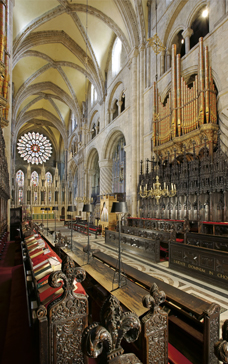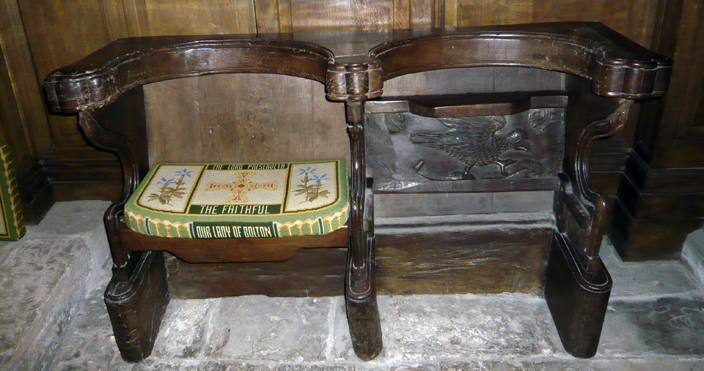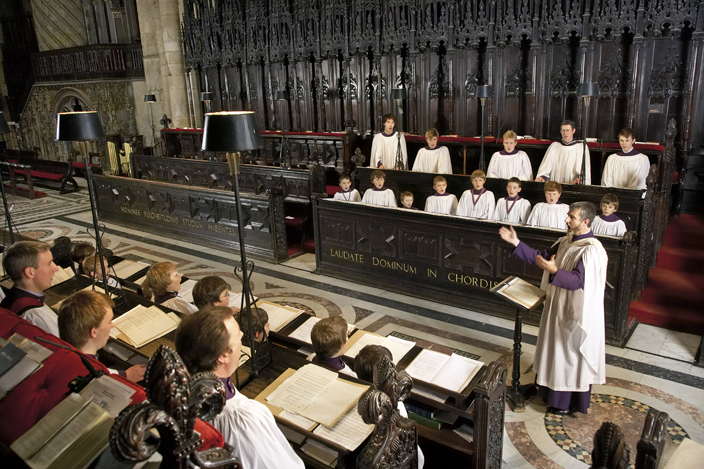The Quire (as distinct from the Choir) is an area of the church often referred to as a “chancel”.

View of the quire looking east.
© Durham Cathedral and Jarrold Printing
Woodwork in the Quire
Like other woodwork in the Cathedral, the quire stalls date back to the the mid-seventeenth century, and were commissioned by Bishop John Cosin, whose architectural legacy is notable. When Cosin became bishop he inherited a Cathedral badly damaged by the Civil War, and bereft of much of its woodwork (which is supposed to have been burned).
Some of the stalls in the quire are designated for different positions in the Cathedral hierarchy – Latin inscriptions indicate the seating arrangement.
The marble paving is later – it dates from the nineteenth century, and is the work of Sir George Gilbert Scott, whose inspiration probably came from Byzantine churches.
Misericords
Misericords, or mercy seats, were to allow monks some respite from the long services, which required one to stand.
The misericords were a good solution as they permitted the praying monks to relieve the weight of their body without sitting down by leaning on the misericord ledge.
The underside of misericords often had elaborate carvings, sometimes depicting religious scenes, sometimes allegories, or mythical creatures.
Only one medieval misericord remains in Durham Cathedral. This dates from the 13th century and depicts the eagle of St John the Evangelist.
Other fine misericords can be seen in the Tunstall Chapel in Durham Castle.

The sole remaining medieval misericord in Durham Cathedral, dating from the thirteenth century and depicting the eagle of St John the Evangelist. The significance of the eagle is made clear by the Greek inscription on the banner in its claws.
The misericord is to be found in one of the two remaining medieval quire stalls in the building. These were probably constructed in 1280 when the Chapel of the Nine Altars was built.
For more details, refer to Charles Tracy, "Two Thirteenth Century Choir Stalls from Durham Cathedral," in The Burlington Magazine, Vol. 35, No. 1083 (Jun, 1993), pages 401-403.
Choristers and the Chorister School
Durham Cathedral has a rich and vibrant musical tradition with several choirs. A sung evensong takes place daily in the quire, bringing it to life. The Chorister School is part of the Durham Cathedral Schools Foundation. Although not all students are choristers, those that wish to be choristers must enter the school as boarders, usually at the age of seven. Until 2009, child choristers were only boys. However, starting in autumn 2009, the Chorister School started accepting girl choristers as well. The first mixed choir sung evensong on November 1st 2009.
The choir also includes adults – Lay Clerks and Choral Scholars – many of whom are Durham University students.

The quire is used daily. Girl choristers were admitted for the first time in 2009.
© Durham Cathedral and Jarrold Printing

